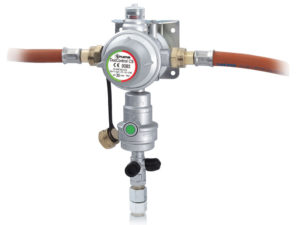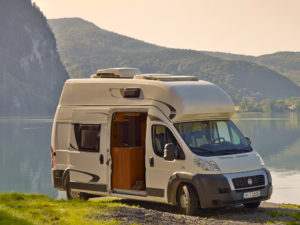Replacement of the heat exchanger is not necessary for Truma liquid gas heaters
Worried customers frequently ask us about the regulation that stipulates that heat exchangers in vehicle heaters need to be replaced after 10 years.
Here is our detailed explanation: (This can also be submitted to the TÜV/Dekra if they do not have a copy.)
In compliance with the Road Traffic Regulations “Technical requirements for vehicle parts for the type test in compliance with §22a StVZO” dated 05.07.1973 for heaters operated with liquid fuels (diesel, petrol), the heat exchanger must be replaced after 10 years of use.
The reason for this are combustion residues.
In the new version of these “Technical requirements” dated 19.03.1990 the Federal Motor Vehicle and Transport Authority also demands the replacement of the heat exchanger in heaters operated with gaseous fuels after 10 years.
However when liquid gas is combusted, no corrosive elements are created that could corrode the heat exchanger of the liquid gas heaters, so that for reasons of safety, a replacement of the heat exchanger is not necessary.
Knowing this, we are convinced that the safety and quality of the Truma products can always be guaranteed well beyond 10 years, which is why we decided to prevent the enactment of the new version of the “Technical requirements” for the benefit of our customers!
We commissioned a technical report on corrosion to assess the durability of Truma liquid gas heaters from the Research and Material Testing Institute for Civil Engineering, Corrosion Protection department, which came to a very clear result: “Heaters of this type can be operated without problems for 30 years or more, without any signs of leaks caused by corrosion”.
Based on this report we were able to convince the Motor Vehicle and Transport Authority to extend the periods of use of the heat exchangers in liquid gas heaters and the exhaust-carrying pipes from 10 to 30 years in the “Technical requirements for vehicle parts in compliance with §22a StVZO”.
This means that these costly replacements that have no technical relevance and do not benefit the customer are no longer necessary.
This now means that anyone who has installed a Truma liquid gas heater Trumatic C, E or S-K in their motorcaravan is freed of their duty to replace the heater exchangers and exhaust pipes over the next years.
Note:
The heater exchangers/combustion chambers in heaters in motor vehicles (lorries and motorcaravan) that were built between 1993 and 2006 must be replaced (after 30 years).
Older heaters have permission to operate in non-compliance and newer vehicle have an E1 code that relieves them of this duty. Example: A replacement duty for e.g. the year of construction 1993 would then come into effect in 2023.
The heat exchangers in caravans are not affected by this regulation.






 Even if the weather is tropical outside, you should only cool down your motorhome or caravanmoderately. Experts recommend only cooling the temperature by around six degrees. This even applies when it is 35°C in the shade. If the temperature difference between the inside and the outside is too large, then this can lead to circulatory problems and illness.
Even if the weather is tropical outside, you should only cool down your motorhome or caravanmoderately. Experts recommend only cooling the temperature by around six degrees. This even applies when it is 35°C in the shade. If the temperature difference between the inside and the outside is too large, then this can lead to circulatory problems and illness.


